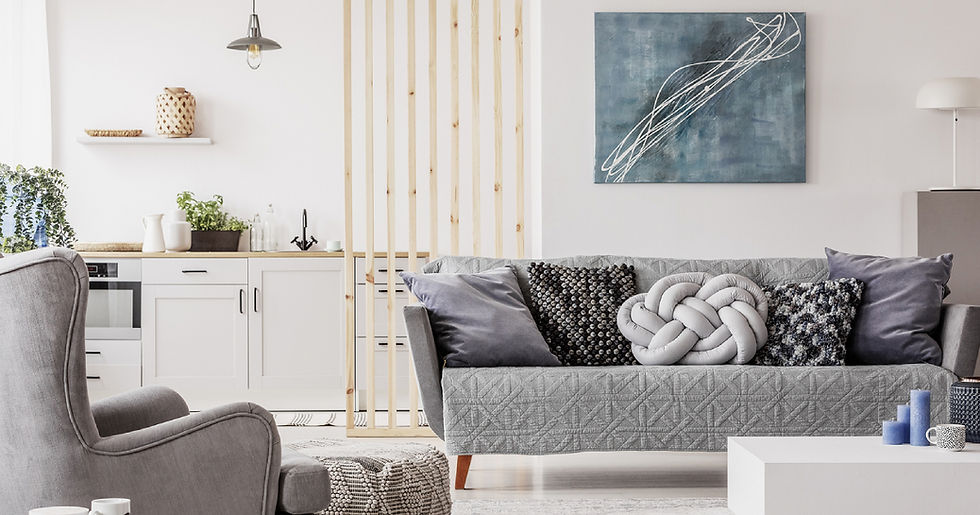Japandi or Minimalist? Which Interior Style Fits You Best?
- Key Concept
- Jun 19
- 3 min read
Choosing the right interior style is more than just picking between light oak or matte black finishes. For homeowners in Singapore—especially those settling into their new BTO, condo, or resale flat—the decision carries added weight due to space constraints, evolving family needs, and the ever-present stress of staying within budget. When considering a refined yet functional home design, two popular aesthetics often emerge: Japandi and Minimalist. But how do you choose between them?
Understanding Japandi and Minimalist Interiors

Before you decide, it's essential to understand what each style represents.
Japandi is a harmonious blend of Japanese wabi-sabi and Scandinavian hygge. It’s warm, calming, and rooted in nature. Think neutral palettes, natural materials like wood and stone, and handcrafted accents that celebrate imperfection.
Minimalist interiors, on the other hand, emphasise simplicity through form and function. It’s about clean lines, uncluttered spaces, and a neutral or monochromatic palette. While both styles value simplicity, Minimalism can sometimes come across as more clinical, whereas Japandi introduces an emotional and tactile dimension.
Which Style Suits Your Lifestyle?
Space Constraints: Function Meets Aesthetics
Singapore homes—especially HDB flats and DBSS units—are not known for their generous square footage. A professional interior design consultancy firm will often recommend both Japandi and Minimalist styles for their space-saving benefits, but the nuances matter.
Japandi works well for those who want serenity and warmth. It allows for multifunctional furniture and natural textures that make small spaces feel inviting.
Minimalist design is ideal for those who prioritise sleek efficiency and are drawn to clutter-free living.
If you often entertain guests or work from home, Japandi’s layered textures and cosy vibes may better support your lifestyle. For those who value visual order and ease of maintenance, Minimalism may win.
Personality and Emotional Connection

Do you see your home as a tranquil retreat or a practical haven?
Japandi resonates with homeowners who appreciate emotional depth in their interiors—every piece has a story, and imperfections are part of the charm. If this appeals to your sensibilities, Japandi might be your match.
Minimalism is perfect for those who find comfort in structure. If visual chaos stresses you out and you prefer everything to have its place, Minimalism will likely feel like home.
Renovation Scope and Budget Considerations
Japandi often involves more custom woodwork and textural layering, which may incur higher upfront costs. However, it’s also longer-lasting in appeal, as it emphasises quality over quantity. In contrast, Minimalist design can be more budget-friendly upfront due to its straightforward approach and emphasis on fewer furnishings.
That said, hidden costs in renovation—like rewiring, hacking, or material upgrades—can affect both styles. Engaging a reputable interior design consultancy firm helps in navigating these pitfalls, especially when dealing with HDB DBSS renovation services, where compliance and design harmony are both crucial.
Maintenance and Daily Living

Minimalist homes are easier to clean and maintain, thanks to their bare-bones approach. Surfaces are typically flat and open, making dusting a breeze. Japandi’s textures and mixed materials may require a bit more care but offer a sensory richness that some find worth the effort.
If you have young children or pets, consider how easily the space can be cleaned and maintained without sacrificing style.
Real-Life Examples: When Style Meets Practicality
A young couple in their 30s renovating a 4-room BTO in Punggol might opt for Minimalism to stretch their budget while keeping the home sleek and modern.
Meanwhile, a family of four in a DBSS flat in Bishan may prefer Japandi for its earthy tones and cosy ambience, creating a nurturing space for both parents and children.
These choices reflect not just aesthetic preferences but the unique needs of each household.
Tips to Decide Between Japandi and Minimalism
1. Mood Board Magic: Start by curating images that resonate with you. Patterns will emerge that hint at your true style preference.
2. Speak to an Expert: Consult with an interior design consultancy firm. They can provide tailored advice and design solutions within your budget and space limitations.
3. Try a Hybrid Approach: Who says you have to choose one? A skilled designer can blend elements from both for a unique hybrid that suits your lifestyle.
Conclusion: Choose the Style That Reflects You

Both Japandi and Minimalist styles offer elegant solutions for homeowners. Your choice should reflect how you want to live, the ambience you seek, and the practical demands of your flat.
If you’re feeling unsure, consulting with Key Concept, a leading interior design consultancy firm with a wealth of experience, can provide clarity. Our tailored approach ensures that your home is both beautiful and functional, crafted to meet the demands of modern Singapore living.
Ready to create your dream home with confidence? Contact us today to explore how Japandi or Minimalist design can be personalised to fit your lifestyle and space.







